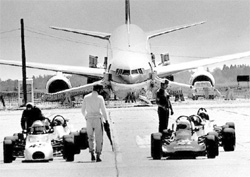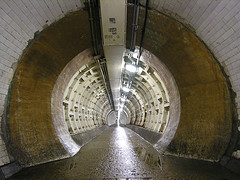A milestone in aviation history this week. The Gimli Glider (pictured) made its final flight on Thursday 24 January.
I mentioned this amazing story a few months back. In brief, in 1983 an Air Canada Boeing 767 ran out of fuel at 28,000 feet over Ottawa and the pilots glided it safely to the ground — landing at an old airport which, unbeknownst to the pilot, was not a motor racing circuit. A very, very fine piece of flying indeed.
The aircraft was returned to normal service — there’s nothing a bit of panel-beating can’t fix! — and for the last 24 years has had a normal career.
Hat-tip (and the full story) thanks to Telstar Logistics.



